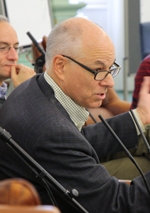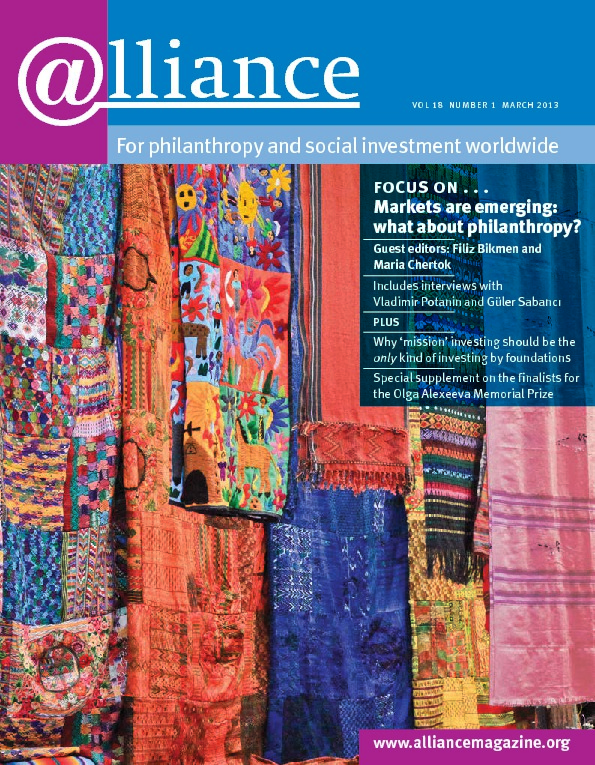‘How much is your financial return discounted by your mission investment strategy?’ We cannot tell you how many times we have heard that question. You might say we ask for it. The F B Heron Foundation has been an early adopter of strategies to invest ‘endowment’ funds in enterprises that offer both mission and financial returns. Today  we seek to deploy all of our capital for mission, and we’d like other private foundations to do the same. But we face this mission investing discount question everywhere and all the time – after every presentation, during every interview, at every board meeting.
we seek to deploy all of our capital for mission, and we’d like other private foundations to do the same. But we face this mission investing discount question everywhere and all the time – after every presentation, during every interview, at every board meeting.
Further, we have always been quick to answer it. We are proud of our investment success, and we have been keen to allay concerns of private foundations about financial risks. Maybe we have grown lazy – the ‘financial discount’ question is comfortable and our answers predictably disarming because our experience allows us to patiently allay the mistaken impression that social and financial return are mutually exclusive.
Nonetheless, it is the wrong question. For a private foundation, an institution established for a social purpose, it assumes that mission and finance are fundamentally at odds. This is a self-limiting approach that suffers the mediocrity of conformity and low expectations. Mission investing must not be viewed simply as a novel feature of private foundations’ investment policy. Boards of private foundations must view the uses of all of their capital as central to their work and missions. In other words, we seek an evolution in private foundation ‘best investment practice’ to the point where we no longer feel the need to use the word ‘mission’ to characterize specific investments or allocations within our portfolios. ‘Mission’ investing will have become the only kind of investing done by private foundations.
Continuing to answer the financial discount question legitimizes it and diverts attention from more important questions about mission achievement. Perhaps the better question would be, ‘How much have your mission-blind investment practices impaired your mission returns?’
To help us get on the right track, F B Heron has made two significant institutional adjustments over the past two years. First, we have eliminated our separate investment and grantmaking departments, establishing instead a single capital deployment operation with responsibility for all investments – stock of public companies, programme-related investments, corporate debt, private equity and grants or shares in a cooperative, to name some possibilities. Second, we resolved to define our financial assets as ‘enterprise capital’, to be deployed fully in furtherance of our mission. In essence, every Heron dollar is a mission dollar and there is no ‘mission’ investing complement because there is only mission investing!
Is this more risky financially? Our experience suggests not. It is certainly less risky from a fundamental mission point of view and carries with it far more accountability than standard practice. That’s the way it should be. Presumably, if we do a good job, we will attract new capital to our investment philosophy, to our mission and strategy, and thrive from both a mission and a financial perspective. If we do a poor job, results will go the other way. In either case, we are making ourselves vulnerable and accountable for our results. We believe it is our responsibility to avoid becoming too comfortable, intellectually limited or plain fearful in investment policies and feel that this self-imposed standard is fundamental to our integrity and effectiveness.
To be sure, F B Heron must still work to overcome some of its own reticence. We still struggle to shed the ubiquitous ‘best practice’ comfort that is afforded by modern portfolio theory (the entire set of risk-adjusted return/asset allocation principles that guide the portfolio construction of virtually every private foundation) and reinforced regularly by its army of proponents. We are developing alternative approaches that connect the expected impact of our capital deployment to annual reporting and account for the cumulative impact of this deployment over time. Only then will we move to a fully value-maximizing investment approach.
We will know this transition is happening when the question we are asked most often shifts from the negative to the positive: ‘How and in what ways have your investments, all of your investments, helped you achieve your mission?’ Whether or not others make that shift, the F B Heron Foundation, for its own internal accountability as well as its legitimacy in any role it might play broadly in the philanthropic sector, embraces this as the guiding question as it builds its portfolio.
Buzz Schmidt is chair of the F B Heron Foundation and Clara Miller is the foundation’s president. Emails buzzschmidt@gmail.com and cmiller@heronfdn.org





Comments (0)